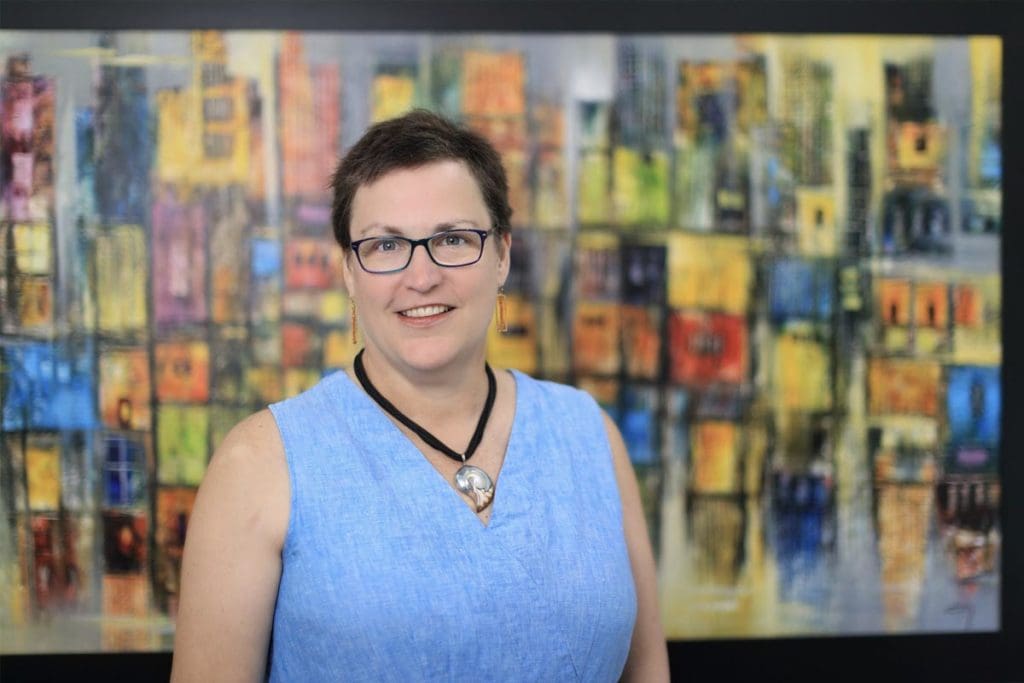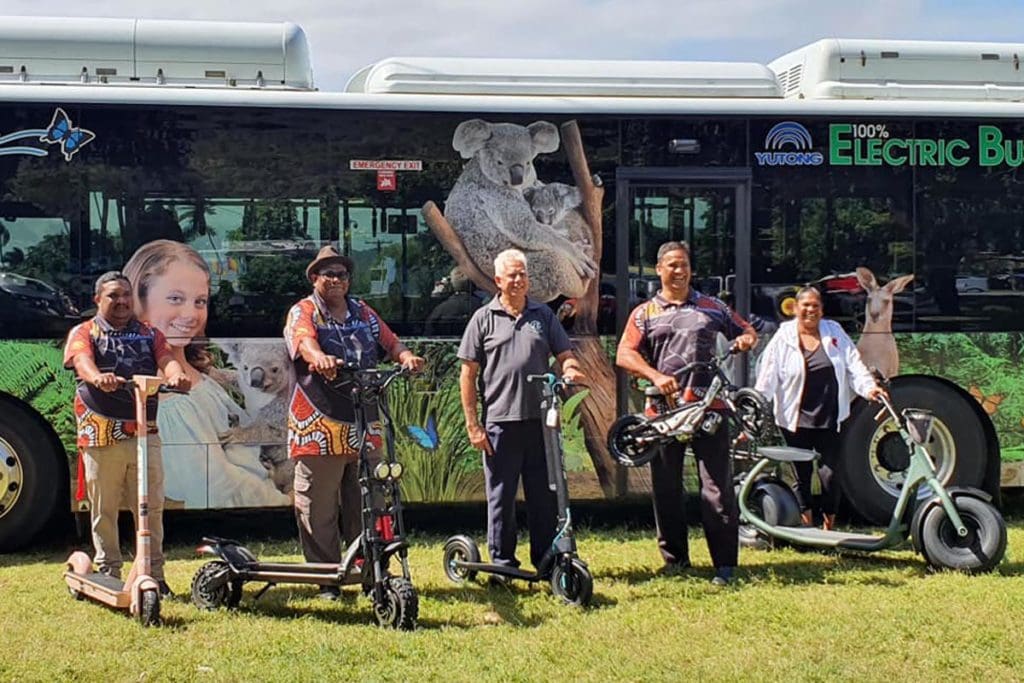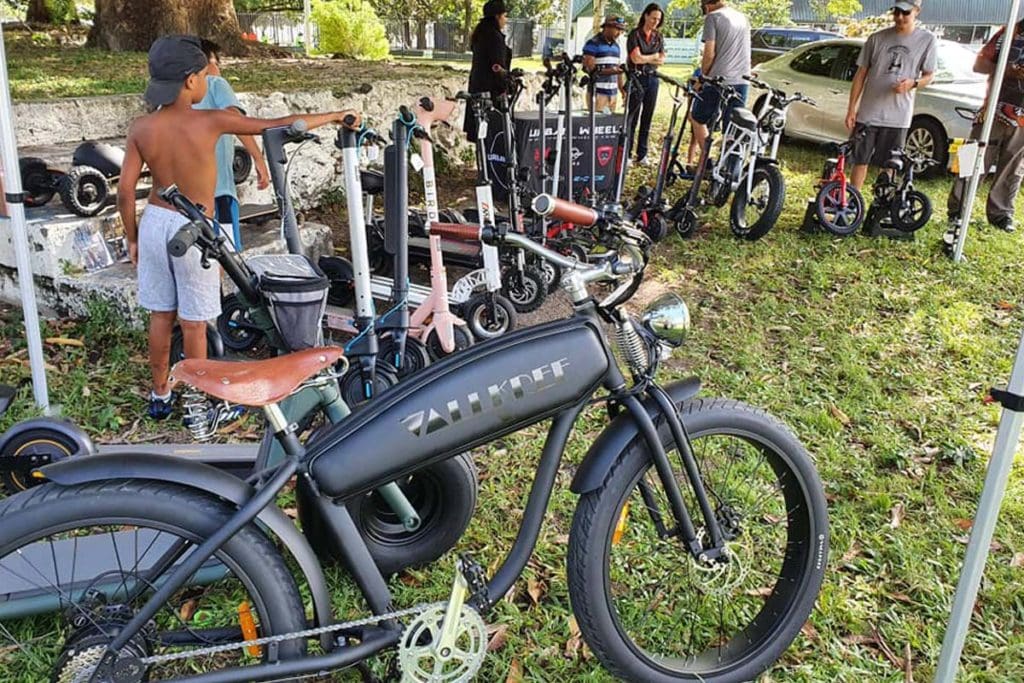Study Adapting US City Micromobility to Remote Australian Towns

Cairns, Queensland
A Cairns-based town planner pushing to make micromobility a public transport solution for Far North Queensland communities has received a Churchill Fellowship to study in the US, to further research the proposal.
The Australian Town Planner of the Year for 2020/21, self described “passionate regionalist” Nikki Huddy, will spend eight weeks studying eight US cities at the forefront of micromobility in that country, with an emphasis on programs focused on social equity and behaviour change.
While much of the focus on share services and other micromobility initiatives in Australia and around the world has centred on major cities, Nikki said e-bike and e-scooter share services could be a massive boost for social equity and quality of living in rural centres, include remote Aboriginal communities.
In particular, she has been looking at the potential for Mobility as a Service in Queensland’s largest discrete Aboriginal community, Yarrabah, which is 16km east of Cairns but is a looping one-hour drive from the major regional city.
“There is a high risk that a transition to sustainable mobility might not happen because we do not have enough skilled people.”
She says micromobility offers a rare opportunity for a “technology leapfrog”, to bypass the provision of traditional public transport in areas such as Far North Queensland, where public transport is extremely limited and is virtually non-existent outside the bigger cities.
Nikki received her Australian Town Planner of the Year Award for her advocacy work across regional Queensland and after many years in local government, she established her own planning and community development consultancy.
“My ambition is to be able to support communities to design and implement their own fit-for-purpose mobility services such as e-scooter share, car share – which works like e-scooter hire – and e-charging hubs,” she said.
“A severe lack of adequately equipped planners and policy makers is holding back the uptake of e-mobility and there is a high risk that a transition to sustainable mobility might not happen because we do not have enough skilled people.”
Her fellowship tour will include Pittsburgh, home to the US’s first and largest Mobility as a Service trial – and a good example of how access to different types of transport can be means tested and subsidised accordingly.
“I look forward to talking to the people who repair the bikes, to the people who prepared the app and everybody in between, the behaviour change people, the people who set the networks and those who figure out how to divide the money between the different share mobility options,” Nikki said.
“Their MaaS trial has all the mainstays of buses, trains and ferry but also includes mopeds, bikes and trikes. There’s an entire program associated with behaviour change, which will be very exciting for adapting to areas across Queensland and Australia.
“When it comes to micromobility, there’s a whole range of passionate technical boffins who really started those early start-ups by matching their ability to create an app with their passion for cycling or scootering. A lot of the drive and innovation around micromobility has come from the tech area, rather than the pedestrian and cycling perspective, and a lot of those people are in America.

“That’s what really attracted me to the US, along with its extremely well resourced bicycle user groups and the fact they have an entire transport organisation dedicated to social and racial equity in transport.”
Nikki is also looking forward to visiting Boston’s two mobility transit labs at the Massachusetts Institute of Technology, as well as Chicago’s share mobility centre and mobility hub.
“If we’re going to take advantage of this technology, were going to have to find avenues that aren’t directly through government.”
“You can access a lot of that information, the case studies, on the internet but it’s the nitty gritty you get when you talk to people and be there to see how it works that is really valuable,” she said.
“There are a lot of similarities between the US to Australia when it comes to topography, distances and minority communities. From a planning perspective, we have always modelled ourselves – rightly or wrongly – on the way the US gets around.
“I intend to talk to the people who funded the start-ups and were the innovators in the US, to find out how you might approach funding for innovative transport in Australia.
“If governments were in a position to provide other transport services they probably would have. If we’re going to take advantage of this technology, were going to have to find avenues that aren’t directly through government.”
“The ability to implement Mobility as a Service allows us to create a transport network where nothing has existed before.”
Nikki, who was a delegate at last month’s Micromobility Conference & Expo in Sydney, said her push for micromobility in remote communities was largely spawned by her involvement in a study into electricity supplies into end-of-grid and fringe-of-grid communities.
“It was looking into the future electricity demands in small regional towns and it became clear very quickly that micromobility and electric vehicles were going to be one of the newest and emerging demands for these communities across Australia,” she said.
“Once we started looking at Yarrabah in particular, which is quite a linear community, we realised the opportunities were there immediately to start to put in a network of micromobility services.
“It’s technology leapfrogging. Just like many communities never needed to have landlines, they went straight to mobile phones. The ability to implement Mobility as a Service allows us to create a transport network where nothing has existed before.”
Yarrabah is an Aboriginal Shire Council area with around 5,000 residents and is the seventh poorest local government area in Australia.
Wedged between mountains and wetlands, the township is around 10km long and only about 500m wide.
The primary school, aged care services, hospital and Centrelink are at the extremities at each end of the township.
“In many ways, that would be problematic for accessibility to those services. However, it’s brilliant if you’re looking at having a series of charging stations for e-bikes or scooters. And you can put them at those nodes that people consistently travel to,” she added.
“The average age in Yarrabah is 23, a really young population in which most people would be comfortable riding scooters and bikes.
“You’re looking at a lot of young families, with opportunities for e-bikes and trikes to move kids around, as well as do your grocery shopping.
“People in these communities often have a lot of jobs to keep their community functioning day to day, and they generally don’t have the time to think strategically and consider technological innovations that will assist them.”
However, Nikki believes there will be people within the communities who will put their hands up to assist and make a program work once it gets up and running.
“I do expect there will be funding for a trial because it is innovative, it’s exciting and it really does have the potential to change people’s lives in a simple way, in the best way. It’s not too expensive and it can have a big impact,” she said.
“The overwhelming feedback was people haven’t been able to get around town and haven’t been to a social gathering for a very long period of time.”
“People generally don’t think about public transport in regional areas. But when the price of petrol is anywhere between 10 cents and 60 cents a litre more expensive in those places, why wouldn’t you try to find ways to make transport more affordable. These are some of the poorest people in Australia.”
In May 2021, Nikki helped coordinate a micromobility field day in Yarrabah.
“We got an electric bus to the town. People don’t think electric vehicles have enough power to get up a hill, so just getting the bus to the town was its own point made,” she said.
“Then we ran the bus around town to pick people up and bring them to the town where we had every type of micromobility we could find: bikes, scooters, trikes, one-wheels.
“The overwhelming feedback was people haven’t been able to get around town and haven’t been to a social gathering for a very long period of time. And you would see that in any community.”
Nikki is proposing e-bike and e-scooter share services in combination with small – around 10 seat – electric buses in centres such as Yarrabah.
She believes the services would not only boost social access in the communities, the implementation and maintenance of MaaS operations – as well as the charging stations and other renewables infrastructure – would bring important employment opportunities to towns such as Yarrabah, where unemployment levels hover around 80%.

Acting on Behaviour Change
She said the programs would require strong leadership within the community, as well as effective behaviour change measures to address issues such as vandalism of the scooters and e-bikes.
That could include replicating a youth education program that used theatre to teach kids about responsible riding of bikes and motorbikes.
Nikki commissioned the JUTE Theatre Group in Cairns to produce a play about road safety and wearing helmets and it won a number of national awards.
It was intended to be rolled out to a couple of indigenous communities across the cape of Far North Queensland and has instead visited most schools in Queensland during 2021 and 2022.
“We’re going to need that behaviour change and education, because of the potential for vandalism and because we’ve got generations of people that haven’t caught a bus, let along ride a bike or scooter.”
